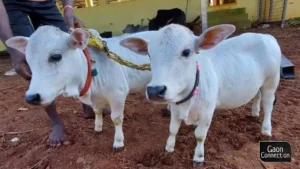In July 2012, experts and forest officials met at the office of the Chief Wildlife Warden, Bhopal, Madhya Pradesh. There were many negative newspaper reports highlighting the constant intrusion of a female tiger and her two cubs into human habitation and twice into Bhopal over a span of just a year.
In this meeting, considering the risks to human life as well as to the tigers themselves, I suggested capturing and relocating them to a safe and suitable habitat in Satpura tiger reserve. The prime concern for suggesting this was to protect the tigers from poachers as Bhopal has a good number of elite poachers who would have loved to try their hands at shooting a tiger instead of the small game that they were fond of indulging in now and then. Another decision that we took in that meeting was to begin a training programme for the territorial field staff in the identification of signs and evidence, surveillance, crime detection, and investigation.
As the tigress had a territory extending from Ratapani sanctuary – Kathotiya to Kerwa, the untrained territorial staff were at their wits end to locate the tigers and prove to the media that the tigers were alive and healthy. To overcome this shortcoming, we deployed some Baiga trackers from Kanha to train the field staff in tracking skills. We also requested the Indian Institute of forest management to depute their two wildlife experts Dr Yogesh Dubey and Dr Advait Edgaonkar to prepare a field-training programme for the staff of Bhopal, Sehore and Obedullaganj territorial divisions to impart knowledge and skills of fieldcraft to them. Both wildlife experts were wise enough to rope in our iconic officers of yesteryear SM Hasan, RC Sharma and PM Lad. The CCF of Bhopal was assigned the implementation of these recommendations.

We also took a decision that once the tigress is located in Kerwa area, a team of wildlife vets with experience in wildlife rescue would assemble at Kerwa to carry out the rescue operation with the help of six elephants brought from the tiger reserves.
At that time, little did I realize that the tigers were not the intruders but in fact, we (humans) had intruded into their home and therefore it was our duty to protect them, instead of shifting them elsewhere.
Meanwhile, on 19.09.2012 one of the cubs was found lying in deep ditch among boulders and thorny bushes near Kathotiya village. The rescue team of Van Vihar retrieved it and brought it to Van Vihar. As the condition of the cub was very poor with multiple injuries and a broken leg, the vet from the Centre for Wildlife Forensic and Health, Jabalpur was also summoned but despite their best efforts the cub succumbed to the injuries on 27.09.2012. Though the vets didn’t find any wound that could have indicated use of trap or a fire arm we assumed that the injury might have been caused by the fall into the ditch and the scraping of the skin of underparts and legs might have been caused by its umpteen unsuccessful attempts to pull itself up on the slope of the ditch. But this incident required us to find us the mother and the second cub that had not been sighted by the staff or villagers for many days.
To launch the search a retired Ranger Shri NK Bisen, who had considerable experience in tracking wild animals and rescue operations, was requested to help us and put on the job on 10.10.2012 to search for the tigress and its cub. On the evening of 10.10.2012, NK Bisen along with SDO, Bhopal Shri Jain, and range officer had already located a kill in compartment number 219, about 2.5 km from the Kerwa nursery, and saw three tigers there (one male, one female, and a cub). On the 12th morning, he along with DFO Bhopal, L Krishnamurthy, and SDO Bhopal again saw a cub, a male, and a female. He had photographed the male and taken video shots of the female.

Once the two tigers were located along with a new male a meeting was convened in the office of the chief wildlife warden the same day to discuss the next step to manage the tigers of Bhopal and a detailed strategy was conceived. As the field-craft training of the territorial staff was to culminate on 14.10.2012, and the field conditions in October were ideal for such an operation, the chief wildlife warden instructed me to commence the operation at once.
We briefed all concerned of the strategy on 15.10.2012. The CCF Bhopal Shri SS Rajpoot was designated the head of the field operations. From CWLW’s office, two APCCFs – Dharmendra Shukla and I were deputed as supervisors.
The problem at this moment was that the team of vets and elephants had not yet assembled and therefore it was impossible to commence the operation immediately. Elephants from Pench tiger reserve were not called for this operation as the incidence of Herpes virus had already killed two elephants there.
On 15.10.2012, the Chief Wildlife Warden issued a formal order permitting capture and relocation of the female and its cub to a suitable habitat. S.S. Rajpoot, CCF Bhopal discussed with me the modalities, and at the end, he asked me a question “Sir, what should we call this operation?” and then he suggested a name – “Operation Durga Vahini.” It was certainly an apt name as the operation was to take place during the Durga Puja festival and involved Ma Durga’s Vahan – the tiger.
The team of wildlife vets from Panna, Pench, Satpura tiger reserves and Madhav National Park and six elephants from Kanha, Satpura assembled at Kerwa by the evening of 16.10.2012. A meeting to review the preparations was conducted by the supervising APCCFs at the field camp. By this time the evidence of the presence of only one of the three tigers was found in compartment 219, therefore the search for the female and its cub was intensified. In the evening of 17.10.2012 Chief Wildlife Warden visited our camp at Kerwa nursery to review the progress, as we were briefing the CWLW, we got the news that one of the elephants from Satpura was unwell, the symptoms – swelling of the forehead and cyanosis of the tongue were observed by the wildlife vets, these symptoms were the sign of a deadly disease that afflicted elephants – Herpes. Besides, one of the elephants from Bandhavgarh was showing signs of “Mast’ and therefore deploying it for the operation was ruled out. The mood at the camp was desolate, and all the attention was to treat and save the elephant. The team of vets tried their best to keep the animal alive. The expert elephant veterinarian, Dr Sharma of Assam, was contacted over phone and treatment of the elephant began, but she succumbed to the infection in the late night. Therefore, the operation was suspended on 18th, but the collection of evidence of tiger presence continued.
In the evening 18.10.2012, we got the news about the presence of one tiger in compartment 219. Next morning, we commenced our operation to search for it and find out whether it was the female or some other tiger. Dharmendra and I participated in the search. As the tiger had killed a buffalo the previous night but had only eaten it partially at the rump, the likelihood of its sighting was high. But despite a thorough search, we could not find the animal. That morning, while alighting from the elephant Dharmendra broke his ankle.

Next morning on 20.10.2012 we searched for the tiger again. Bisen saw the tiger in the morning near the kill it had made the previous night and kept a watch on it. As the tiger was in sight, the team decided to immobilize it and put a radio-collar on it (even if it was not the female) so that in future its movement could be monitored with ease. The team of vets along with CCF and I began to encircle the tiger with four elephants. When the tiger saw the elephants, it gave out a loud roar and then ran into the cover of lantana bushes. It stayed there for about five minutes, growling intermittently and then it rose and walked deeper into the cover of thick lantana bushes. After that, despite a lot of effort, the tiger eluded us. The team assembled for debriefing and to discuss the future course of action. The mahouts felt that four elephants were not enough to encircle the tiger or pursue it and find it after it had been hit by a dart as the undergrowth was very dense. The vets, therefore, decided to wait for two more elephants that were to arrive the next day from Kanha.
I apprised the CWLW of the developments. A news item was published in the Dainik Bhaskar on 21.10.2012 which I found hilarious as well as disgusting – the reporter who wanted to be a part of our search operation but had not been allowed had imagined scenes from the field and had painted a fairy tale picture of the happenings of yesterday. She wrote – ‘The vet fired a drug dart at the tiger, which missed it and then the angry tiger jumped into the air and flew over the heads of the mahout and forest staff and landed on the other side’. Annoyed by this irrational report, I called the lady and asked her whether she had been present on the day when such exciting action was going on in the forest of Kerwa. Then I told her I was there and what had actually happened.

There was still confusion about the sex of the animal hence the field teams were asked to ascertain this at the earliest. On 21.10.2012 two mahouts, who had seen the animals’ rear, confirmed that this was a male tiger.
As our primary target was the female and her cub, we intensified our search to locate her. CCF Bhopal traveled to Kathotiya from where the staff had reported her fresh pug marks on 21.10.2012. In the evening he reported to me that he had seen and traced fresh pugmarks of the female in compartment 214 Bhanpur on the boundary of Sehore and Bhopal Division. He could also see the pugmarks of the cub some 1.5 km away from its mother’s pugmark in compartment 212 Samnapura. It was then decided to try and attract the female to a suitable location in any of these two compartments or at a suitable site near it and launch the operation early morning on 23.10.2012.
As this operation could not and should not continue indefinitely, we gave ourselves a deadline – till 31.10.2012. As shifting the entire camp was not feasible, we suspended the operation till 26.10.2012; only the tracking and monitoring teams remained active hoping that the female would return to Kerwa. On the 26th evening, we got the good news that the female and her cub were back. On 27th October we were in the field again, but the tigers continued to play hide and seek. On 31st October at about 6 am, we found fresh pug marks of the male as well as the female on the dirt road not very far from the Kerwa dam. We mounted the elephants and soon located the tigers in a forest patch nearby. The vets geared up to take the shots but restrained themselves when they saw the tigers in courtship.
We left the tigers alone and assembled for debriefing. We unanimously decided to call off the operation in the present circumstances. We also concluded that the tigers in Kerwa and Kathotiya are not vagrants but residents in this habitat and they should have the right to their home. These tigers obviously were from the nearest natal area – the Ratapani sanctuary, and now they had found a home in these forests. I came back and briefed the CWLW. Of course, he was a bit worried as the tigers were living too close to people now and sooner or later, he would have to face pressure from the politicians and Mandarins sitting in Ballabh Bhawan (the Secretariat). But he as a true leader respected our point of view and stood by this decision.

The best outcome of this field exercise was the training that the territorial staff received from us in field craft – making pug impression pads (PIPs), maintaining and monitoring PIPs, setting up camera traps, reading pugmarks, made them confident, and they never looked back. Now, these foot soldiers are adept in tracking tigers and predicting their whereabouts. We also provided sufficient resources to L. Krishnamoorthy, DFO Bhopal to create perennial water sources in the forest, camera traps, deployment of watchers and for surveillance and protection. More vehicles were hired for round the clock patrolling and later WW-India provided a Bolero for the field teams. In due course of time, we supplemented the on-foot and vehicular patrols with an electronic surveillance system – called the E-Eye. Four towers (five in 2017) fitted with cameras equipped with powerful zoom and night vision were erected at strategic places to cover a large part of the tiger movement area in Bhopal and Sehore forest divisions. A permanent control room was set up at Kerwa to monitor tigers, other animals, and intruders. A system of SMS alert is inbuilt in the software that sends messages to the mobile phones of the field teams and DFOs.
For his excellent work. I recommended his name for WWF-PATA Bagh Mitra Award and my nomination was upheld. Krishnamoorthy received the Award in 2014 at a ceremony in New Delhi.
The hue and cry about the tigers of Kerwa has again resurfaced in recent times. The problem is that short-term solutions like capturing and shifting tigers from Kerwa is not going to work as the vacant territories will be occupied by new tigers dispersing from the nearby natal area – the Ratapani sanctuary. I have discussed the situation of Kathotiya and Kerwa forests in detail in my story – Tigers of Bhopal.
There have since been some hasty decisions a few years ago, when young dispersing tigers were captured and shifted to a tiger reserve. I don’t think that this strategy will work.
The equipping and training of the territorial officers and staff to inculcate in them a sense of responsibility towards wildlife management in their respective jurisdiction began at the time of Operation Durga Vahini. Enthused by this support from the headquarter some of the CCF’s and DFOs did excellent work towards monitoring and protecting tigers. Tiger numbers are going up in natal areas, and it is quite natural for the young and the weak ones to get out of PAs to find new homes or vacant territories. And while doing so, they are frequently accosted by the villagers and city dwellers. Tigers by nature are wary of human beings, and they swiftly leave the area frequented by people.
These tigers should not, unless they pose an imminent threat to people by becoming confirmed man-eaters, be removed and placed in a zoo or shifted to other habitats. Because if we permit this to happen frequently we would be negating our own hard work and the territorial staff would never become responsible for wildlife in their territory (in every case in which a tiger is seen in a territorial division the CCFs and DFOs will inform the head quarter and persuade the CWLW to remove the tiger). The other noteworthy point is that considering the prey availability, as well as the fact that most of our tiger reserves, have enough tigers already and sending more tigers caught from territorial divisions to those tiger reserve will create more problems for both – the tigers and well as the wildlife wing.
These dispersing tigers should be left alone. If such a tiger has taken residence in a habitat near a village, the first thing that territorial forest staff should be doing is to plan a proper monitoring and protection protocol and follow it meticulously (the Datia case is an excellent example). One should realize that wherever (in territorial forests) the tigers are dispersing, were once tiger bearing areas not far back in time.
Featured image photo by L Krishna Moorthy



















